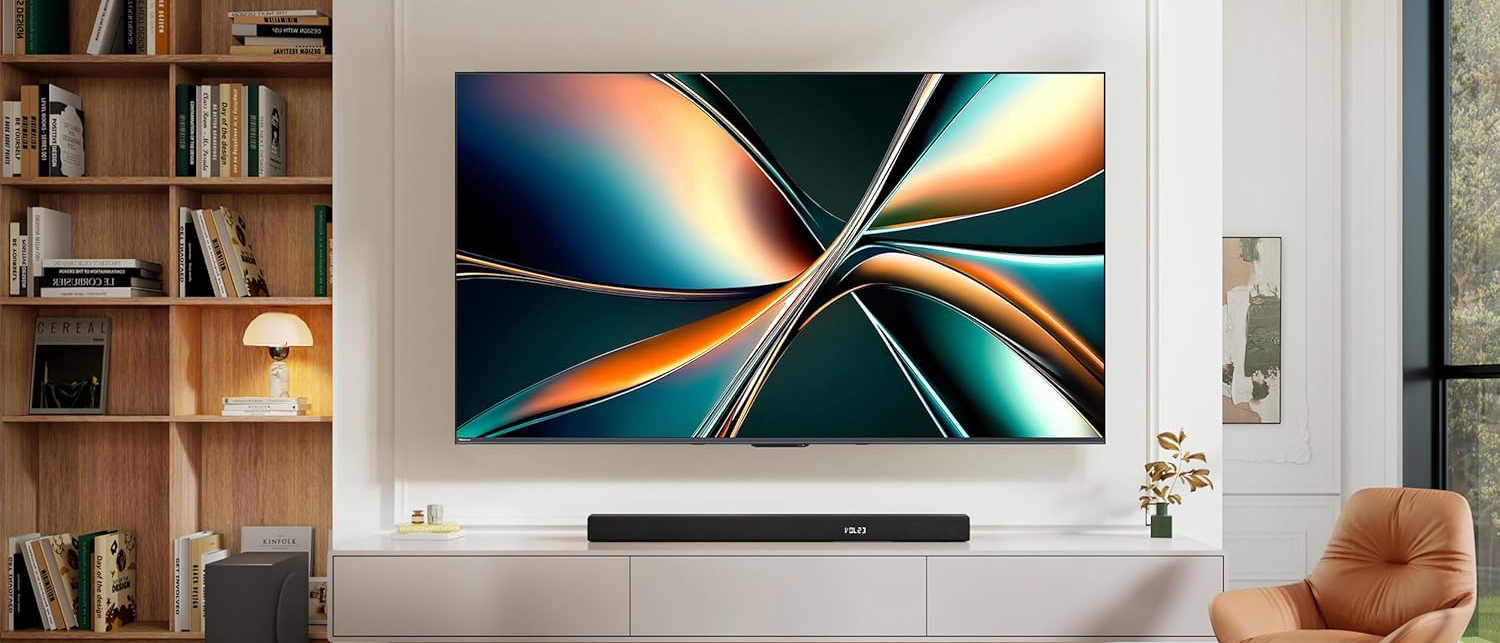Tom's Guide Verdict
Delivering impressive brightness and good color for an ultralow price, the Hisense U65QF is held back only by its underwhelming operating system and a few other minor issues.
Pros
- +
High brightness, especially with HDR content
- +
Good color performance
- +
Superb value proposition when purchased at sale price
Cons
- -
Some problems with fast action, light bloom, viewing angles
- -
Uninspiring Amazon Fire TV operating system
Why you can trust Tom's Guide
Price: $569.99
Screen size: 65 inches
Model: 65U65QF
Resolution: 3,840x2,160
HDR: Dolby Vision, HDR10, HDR10+, HLG
Refresh rate: 144Hz
Ports: 2 HDMI 2.1, 2 HDMI 2.0, 2 USB
Audio: 40W
Smart TV software: Amazon Fire TV OS
Size (without stand): 56.9x33x3 inches
Weight (without stand): 45 pounds
Your dollar may not go as far these days, but the Hisense U65QF is a clear exception. Though this is the lowest-end model in the company’s ULED line of Mini-LED TVs, it marks not only a substantial upgrade over last year’s model, but also one that trounces its competitors soundly, particularly when on sale.
What makes it such a winner? Well, its good color and terrific brightness don’t leave you wanting much in the picture department and it comes with two HDMI 2.1 ports that deliver up to 144Hz playback when connected to a gaming PC.
What missteps it makes are mostly around the edges: limited viewing angles, light bloom, and Amazon’s hokey Fire TV operating system powering it. These hamper the U65QF a little, but not enough to keep it from being one of the best budget TVs you can currently buy.
Hisense U65QF review: Pricing and availability
The U65QF is Hisense’s entry-level ULED Mini-LED TV, with the midrange U75QG and the upper-midrange U8QG above it. The TV comes in a variety of sizes to slot into any living room, though all of the models are (relatively) wallet friendly:
- Hisense 55U65QF (55-inch): $799 | Sale: $449
- Hisense 65U65QF (65-inch): $999 | Sale: $569
- Hisense 75U65QF (75-inch): $1,299 | Sale: $799
- Hisense 85U65QF (85-inch): $1,999 | Sale: $999
- Hisense 100U65QF (100-inch): $3,499 | Sale: $1,899
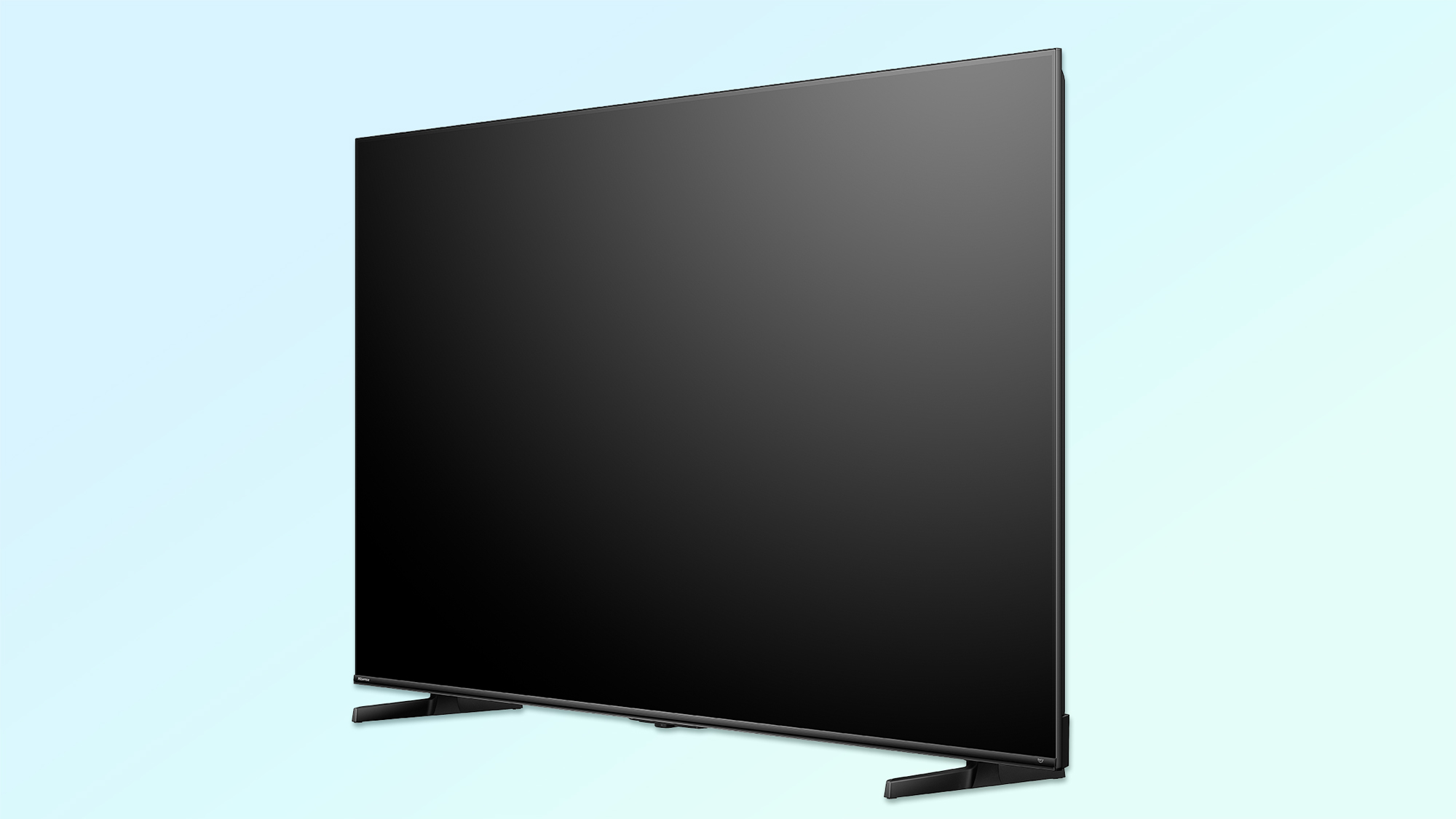
You will almost always be able to find the U65QF for sale online, either at Best Buy or Amazon, for closer to the sales price than the MSRP, and it wouldn’t be surprising to see it drop even more during the holiday season.
We evaluated the 65-inch model for our review. All sizes boast the same software and feature set and will probably perform similarly, though because each one has a different number of dimming zones, there is likely some variation in brightness among the models.
Hisense U65QF review: Design
The U65QF, which measures 56.9 x 33 x 3 inches and weighs 45 pounds without its stand, has no standout design elements on either its front or back, aside from the de rigueur gray bar at the bottom that measures just under half an inch and sports the Hisense logo on the far left side.
Get instant access to breaking news, the hottest reviews, great deals and helpful tips.
Directly under the center of that bottom edge is a hardware button you can push for instant access to inputs, volume, channel, and power functions.
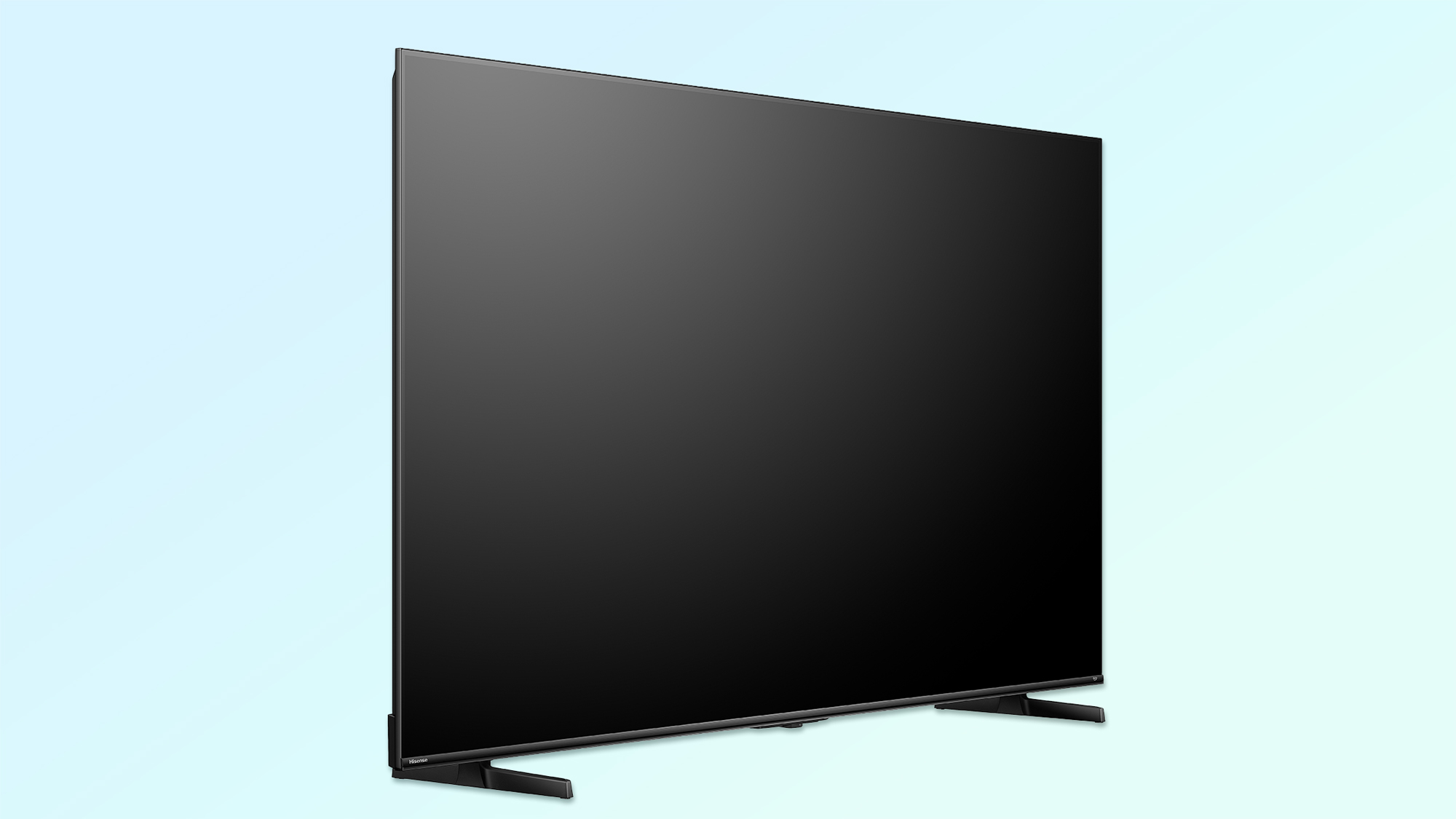
The stand consists of two straight feet that easily screw into the bottom of the set near the corners. If you would rather mount the TV on a wall, you can use the 400x400 VESA holes on the real panel.
Hisense U65QF review: Ports
The power cable connects to the right side of the U65QF’s rear panel, and all the other ports are found on the left. Three face directly out the back: Ethernet, S/PDIF optical audio out, and one powered USB port (0.5 amp). The others angle out the left edge. These comprise a headphone jack, AV IN, a coaxial cable connector, and a second powered USB port (up to 1 amp), in addition to the four HDMI ports.
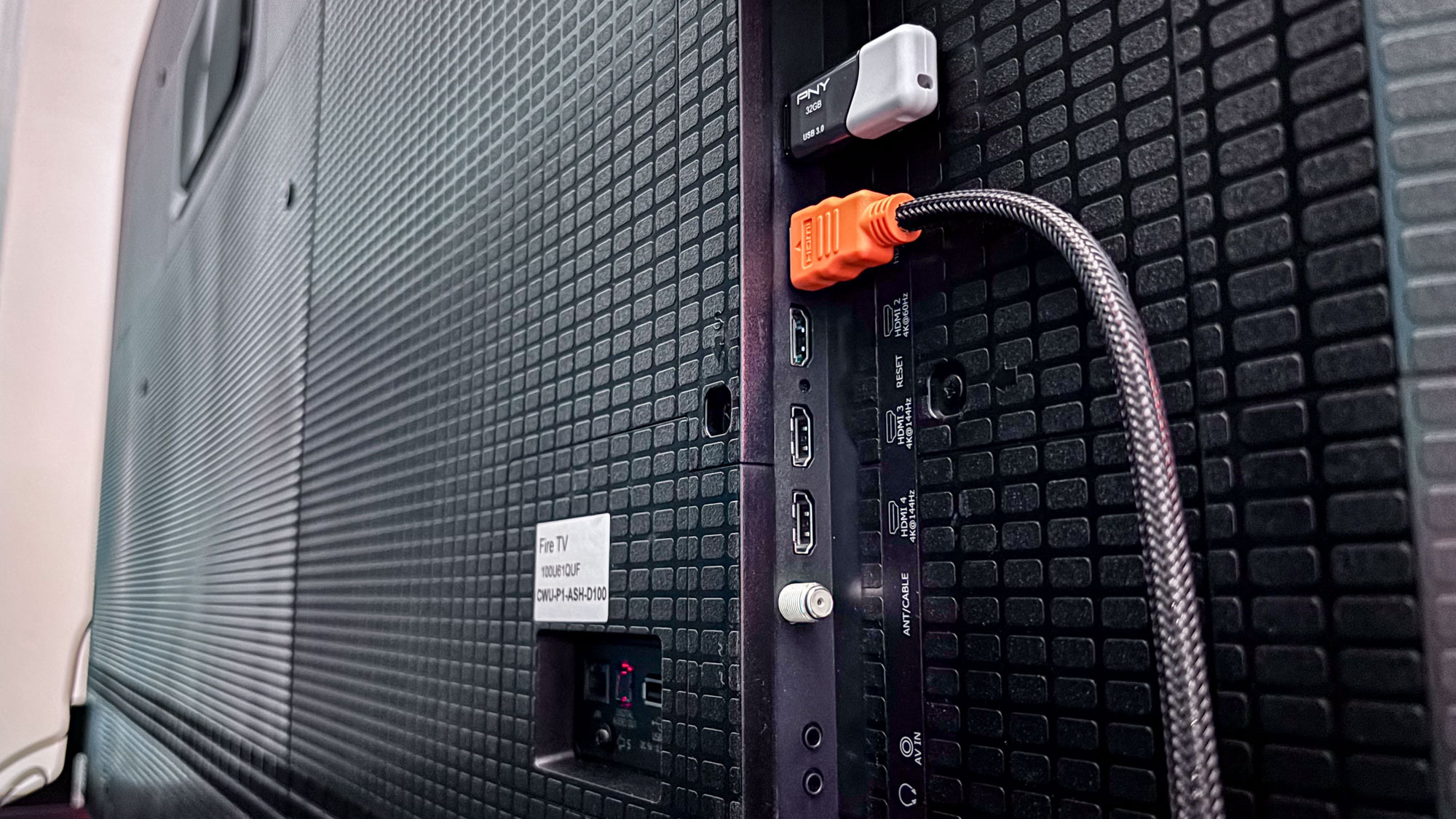
Of these, only two support HDMI 2.1 and the full speed of the screen’s 144Hz refresh rate; the others, including one with ARC for connecting a soundbar, are limited to 60Hz. This isn’t exactly uncommon among TVs, but it’s always nice when all the ports support the higher speeds and broader feature set of HDMI 2.1 to support more devices and better future-proof the set. (With HDMI 2.2 on the horizon, though, this may not be a problem for long.)
Hisense U65QF review: How we test
We follow a standard testing protocol for every TV we review at Tom’s Guide. Our benchmarks include a series of technical and subjective tests designed to rate the set’s performance. For our technical tests, we set the TV to Filmmaker Mode (usually the most accurate out of the box) and take measurements using a Jeti spectraval 1501-HiRes spectroradiometer, a Klein K10-A colorimeter, a Murideo 8K-SIX-G Metal pattern generator, and Portrait Displays’s Calman TV-calibration software. We also use a Leo Bodnar 4K Video Signal Lag Tester for determining the TV’s gaming prowess.
Subjective tests vary based on the reviewer but usually include anecdotes from a diverse selection of movies, TV shows, and other content reflecting the types of things you may actually want to watch on the TV. For a more detailed look at what we do and how we do it, check out our “How we test TVs” page.
Hisense U65QF review: Performance and test results
| Row 0 - Cell 0 | Hisense U65QF | Hisense U6N | LG QNED80T | TCL QM6K |
SDR Brightness (10%, in nits) | 526 | 235 | 299 | 129 |
Delta-E (lower is better) | 1.83 | 2.57 | 2.73 | 2.37 |
Rec. 709 Gamut Coverage | 99.45 | 99.13 | 98.24 | 99.67 |
HDR Brightness (10%, in nits) | 946 | 575 | 527 | 560 |
UHDA-P3 Gamut Coverage | 95.65 | 92.96 | 92.32 | 94.71 |
Rec. 2020 Gamut Coverage | 71.26 | 75.1 | 67.13 | 71.23 |
Input Lag (ms) | 13.2 | 9.3 | 15.2 | 13.1 |
What ultimately matters most, however, is the quality of the picture on the screen, and on that front, the U65QF rates an unequivocal “not bad.”
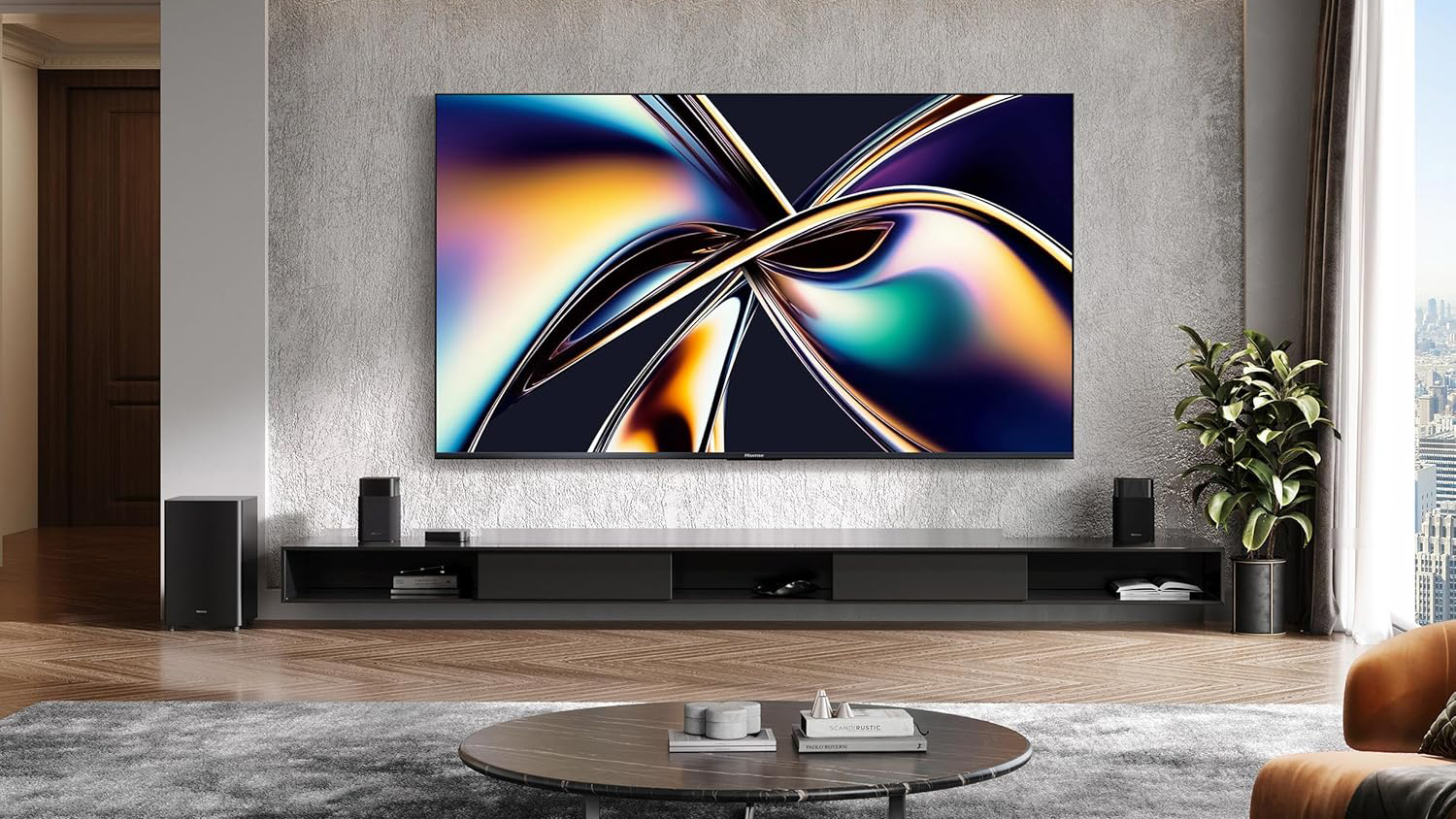
In cycling through my current roster of recent test movies, I couldn’t find anything that wasn’t at least watchable — and most of the titles were better than that. The one that came closest to stumbling was Ryan Coogler’s tense vampire film “Sinners”: Loaded with dark scenes and a predominantly Black cast, it can be difficult to watch in a room with even average amount of lighting if the TV isn’t bright enough to punch through the glare. But although glare and reflections on the screen were noticeable with the U65QF, they weren’t bad enough to be disruptive.
More conventionally lit and brighter movies had no trouble at all.“A Minecraft Movie,” “Barbie,” “Dune: Part Two,” “Spider-Man: Across the Spider-Verse,” and “Wicked” all appeared thoroughly satisfactory. “Deadpool & Wolverine” mostly looked fine as well, though there was a bit of visible bloom around the lead characters leading up to the big confrontation near the end; I noticed bloom at other times during my testing period, too, and there was a little ghosting during faster action scenes, but these instances were generally tolerable.
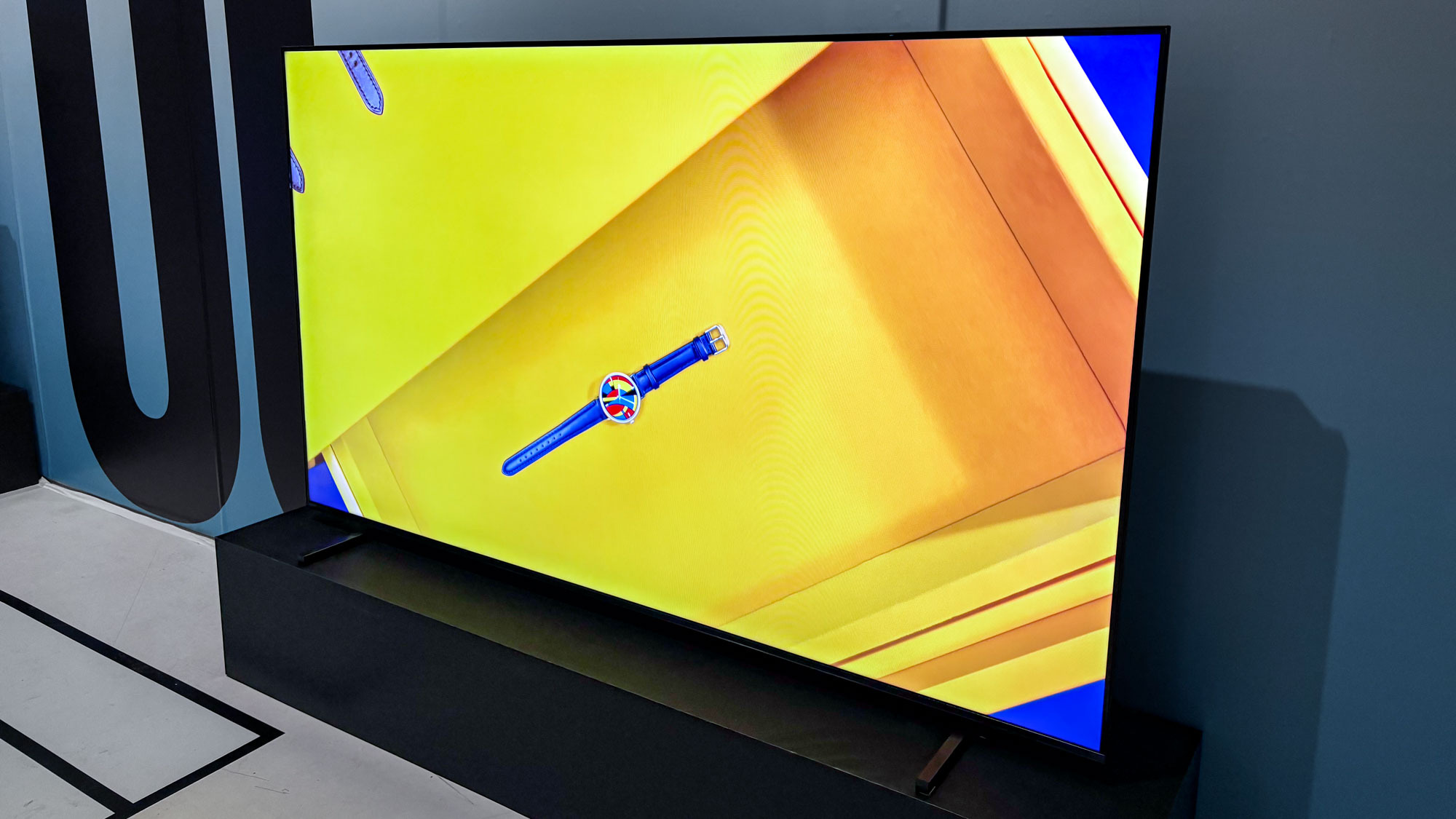
More distracting for me were the limited viewing angles. Stray just a bit away from the center and the picture starts losing detail and color definition more quickly than with many other sets I’ve seen. The more you’re able to cluster viewers toward the center, the better the U65QF is likely to look for everyone.
Our test results confirmed the overall quality of the U65QF’s picture. In terms of brightness, it did support Hisense’s claims, at least in HDR: In Filmmaker Mode, the most accurate, the set managed 946 nits on 10% of the screen and 1041 on 25%. With SDR content, the TV hit only 526 nits (on 10% of the screen), though that makes sense with a mode intended to mimic Hollywood accuracy. Vivid mode, designed to maximize visual impact, saw 956 nits in SDR.
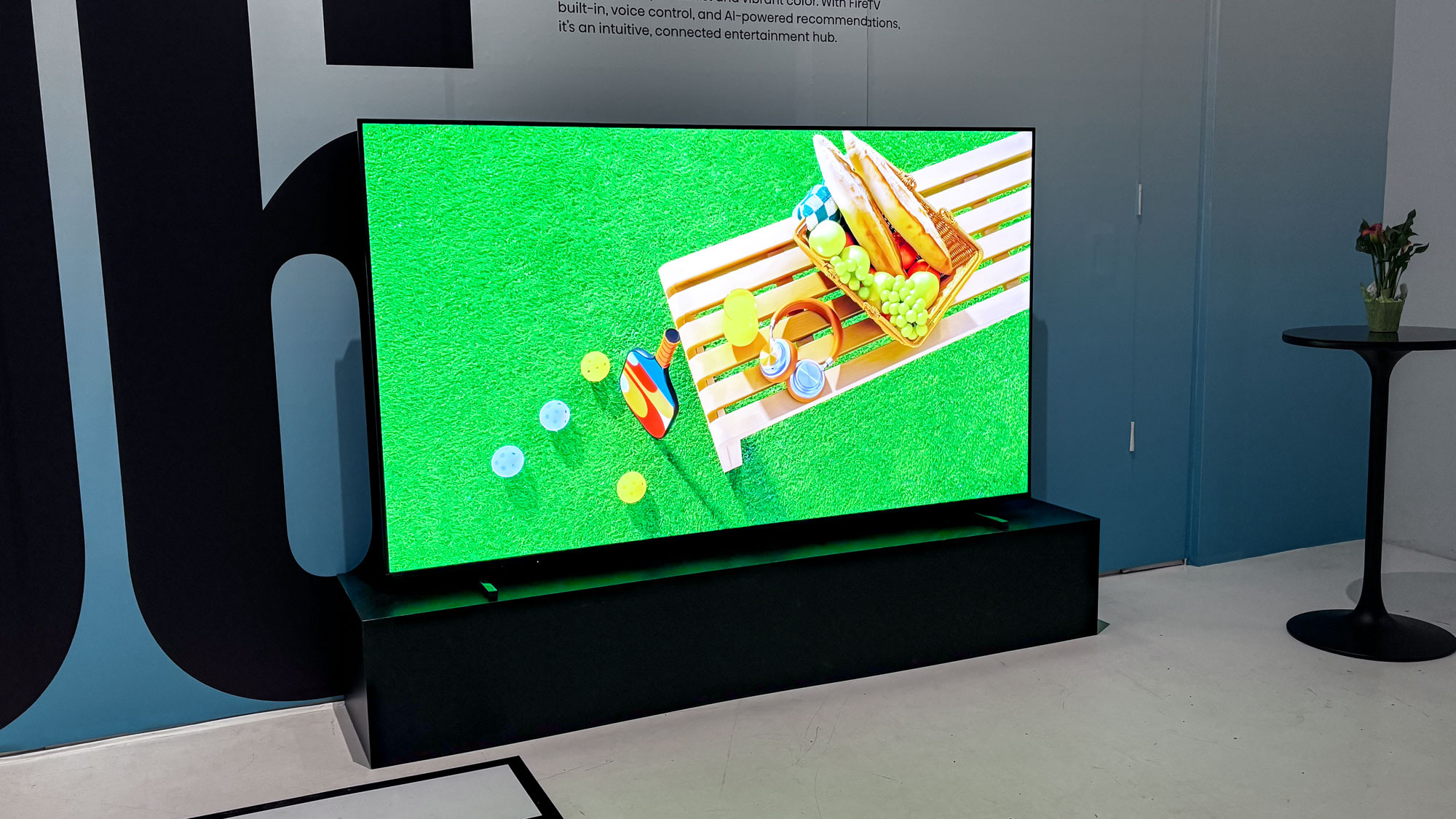
The U65QF is just as accomplished with color. Its Delta-E (a value representing the difference in color between the source and the screen, with lower numbers being better), was an outstanding 1.83, and it covered 99.45% of the Rec. 709 color gamut. Its 95.65% coverage of the UHDA-P3 gamut is solid for a set this price; its 71.26% coverage of the wider Rec. 2020 gamut is similarly par for the course. Because the U65QF supports all major HDR formats (Dolby Vision, HDR10, HDR10+, and HLG), you’ll have no shortage of ways to experience the picture quality for yourself.
It’s worth mentioning that the U65QF’s picture performance represents a major upswing both from last year’s Hisense U6N (with more than a 64% increase in brightness, for example) and other competitors such as the LG QNED80T and the TCL QM6K. We saw similar jumps in performance with the Hisense U75QG, so the company is keeping the improvements in the family, and they’re stark enough that you may very well want them part of yours, too.
Hisense U65QF review: Audio
Superior audio quality is rare on TVs, and it’s even harder to find in low-end models — including the U65QF. It’s nice that this TV has support for Dolby Atmos. But in playing multiple types of content, from movies and music to video games, I found the sound passable, but not a lot more than that.
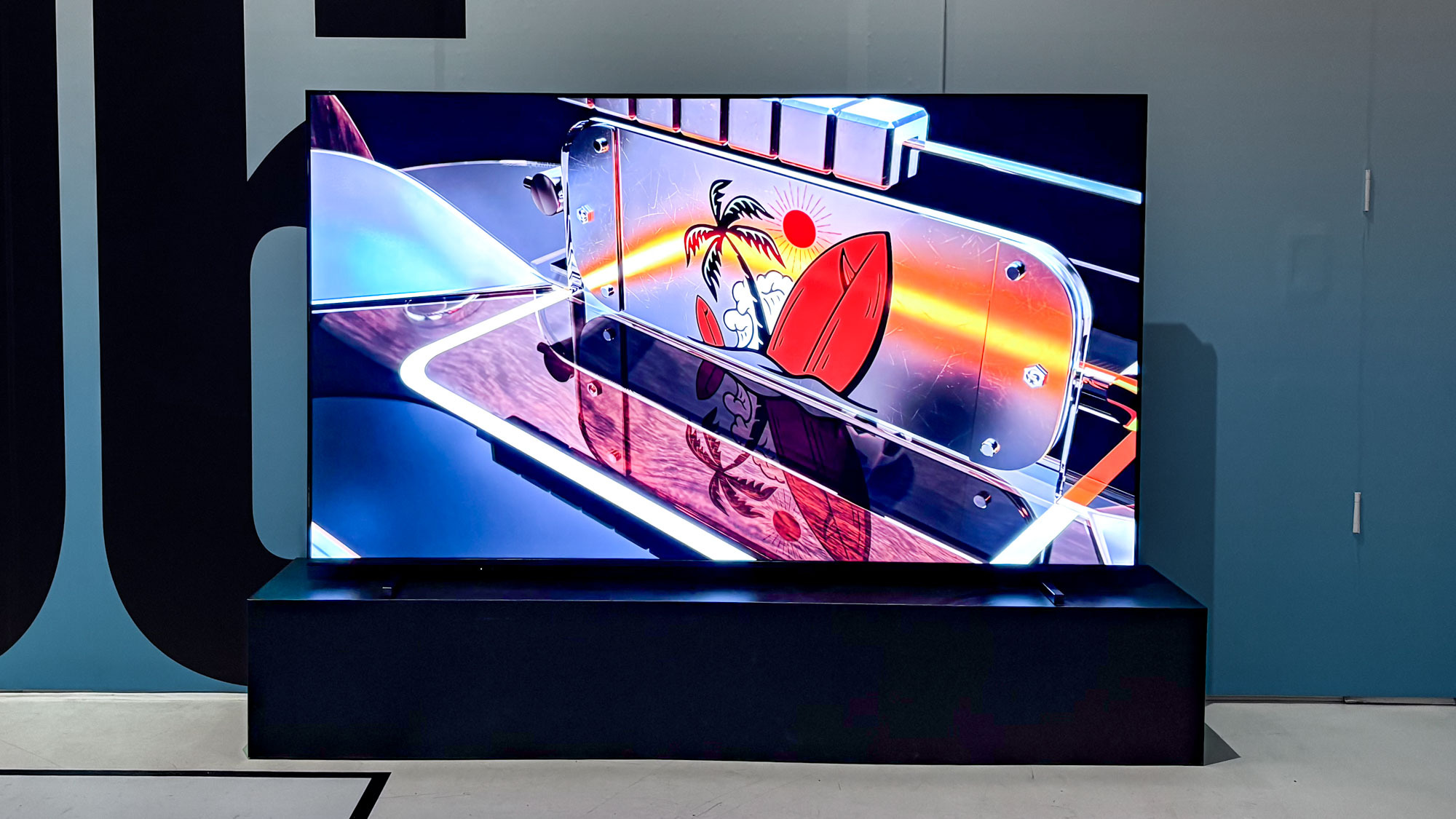
On my soprano test track, which climaxes in a clarion B-flat, the sound took on a noticeable metallic shrillness at the highest volume levels. There was also obvious distortion in the bass output on The Knife’s “Silent Shout,” which hurt what was otherwise mediocre low-end presence to begin with.
I didn’t encounter any serious problems while watching aurally textured action movies, dialogue-heavy scenes, or simpler TV shows, so as long as you temper your ears’ expectations, the U65QF should do fine. If you want anything more, you’d be better off adding one of Tom’s Guide’s best soundbars to your entertainment setup.
Hisense U65QF review: Gaming
Using our Leo Bodnar 4K Video Signal Lag Tester, I measured the U65QF’s lag at 13.2ms. We consider anything below one frame (about 16ms) good, so this TV easily meets that target — a common one for lower-price TVs. Last year’s U6N got lower, as do Hisense’s higher-end ULED sets, but there’s still not much to complain about.
The native 144Hz panel ensures smooth animation, and HDMI 2.1 features like Variable Refresh Rate (VRR) and Auto Low-Latency mode (ALLM) sweeten the pot, as does support for AMD FreeSync Premium. I encountered no hiccups playing Indiana Jones and the Great Circle on the U65QF.
Hisense U65QF review: Smart features
As recently as last year, Hisense was loading all of its TVs with the top-notch Google TV operating system. Unfortunately, the U65QF doesn’t have it. Instead, it uses the Amazon Fire TV OS, which is a huge step down.
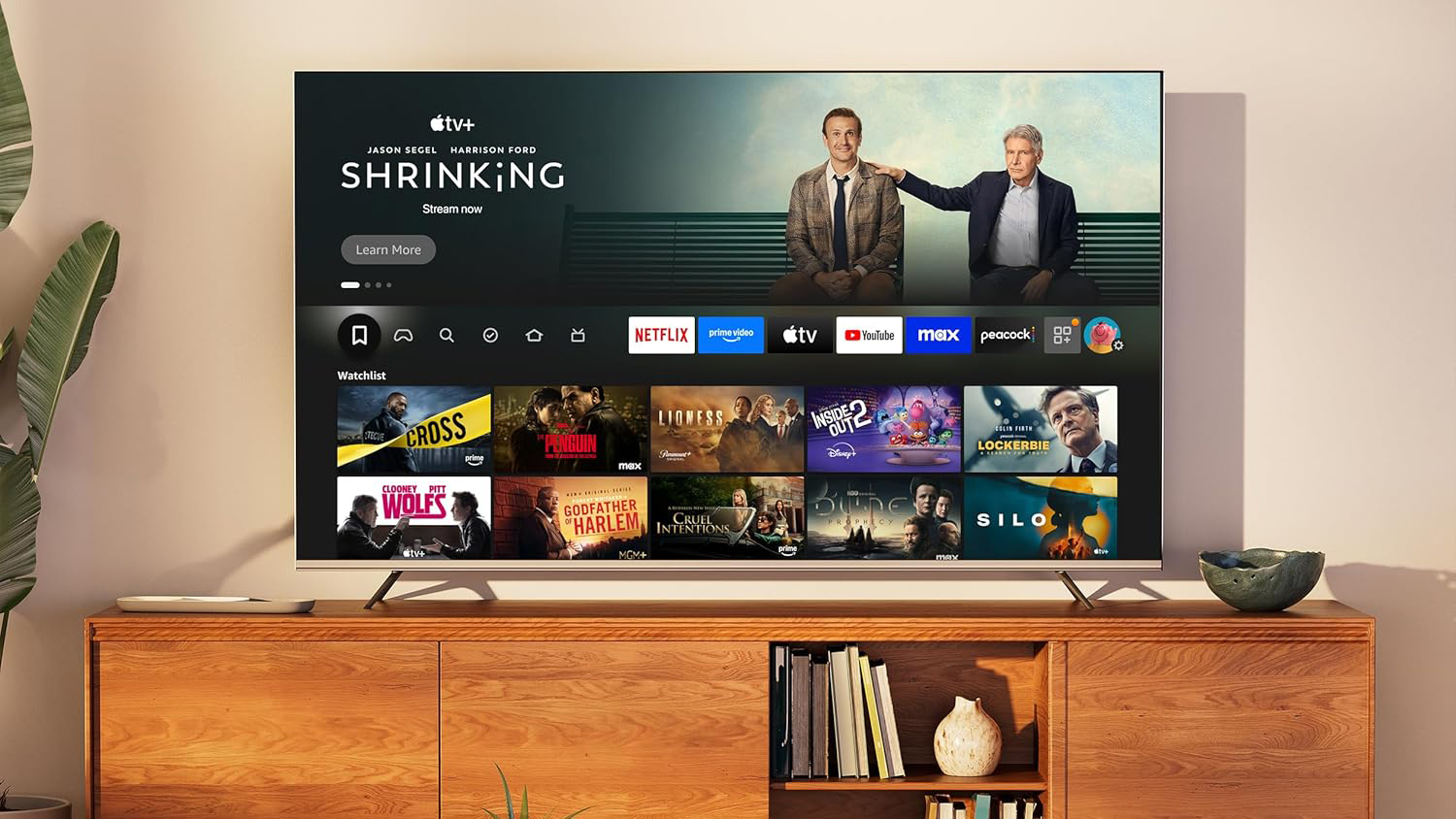
Uglier (from the sprawling top-center banner on down), less powerful, more difficult to navigate and customize, and heavily linked to Amazon’s content ecosystem, it gives the TV a cheaper, chunkier feel in most situations. It takes longer to do anything else that isn’t watching or searching Amazon content. At least Alexa is integrated, so you can easily search by voice, though you’ll need to use the remote control, as there is no on-board far-field microphone.
For streaming content, there’s support for Apple AirPlay for casting from Apple devices, though not Google Cast if Android is your mobile OS of choice. The built-in tuner is only ATSC 1.0, so over-the-air 4K streaming is out of the question.
Hisense U65QF review: Remote
The U65QF uses a standard-issue Fire TV remote: small, simple, and Amazon-forward. There’s a bright blue Alexa button at the top, and shortcut keys for Prime Video and Amazon Music (in addition to Netflix and Disney+) at the bottom.
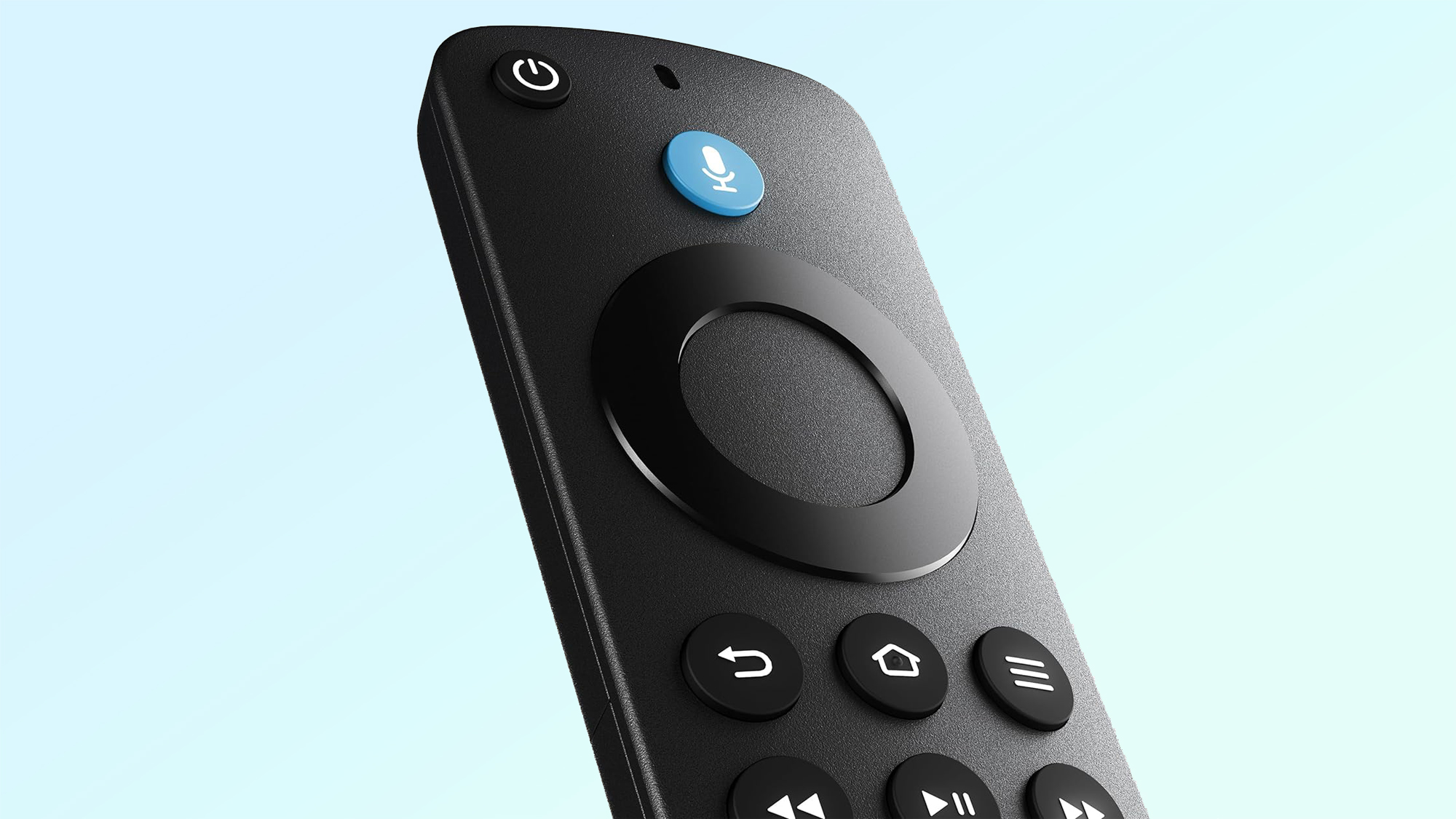
There are no other surprises. The remote is not a looker, but the tiny pops of color against the black plastic are nice, its curved back gives it an ergonomic feel in the hand, and it does its basic job with a minimum of fuss.
Hisense U65QF review: Verdict
There’s no doubt about it: Given its performance, the Hisense U65QF is an affordable powerhouse of a TV. For a sub-$600 price, you wouldn’t expect a flawless picture all the time, and the U65QF’s is not that. But, it performs unusually well, which is something everyone should appreciate — no matter how much money they have to spend.
The biggest problem is Amazon’s Fire TV OS, which is tedious and cumbersome to use, especially compared with Google TV, which is used on the higher-end models (and even graced last year’s U6N). Hisense has prioritized value in nearly every other area with this TV; the operating system can’t help but feel like a letdown.
But that’s about it. And if you can live with it, you’ll find that your TV dollars go much further with the Hisense U65QF than with most other sets currently on the market.
Matthew Murray is the head of testing for Future, coordinating and conducting product testing at Tom’s Guide and other Future publications. He has previously covered technology and performance arts for multiple publications, edited numerous books, and worked as a theatre critic for more than 16 years.
You must confirm your public display name before commenting
Please logout and then login again, you will then be prompted to enter your display name.
